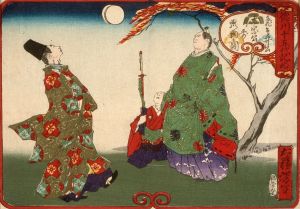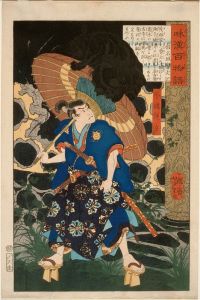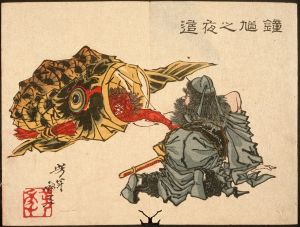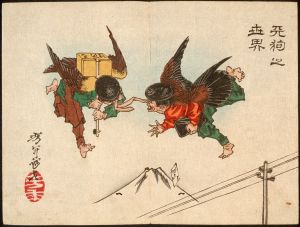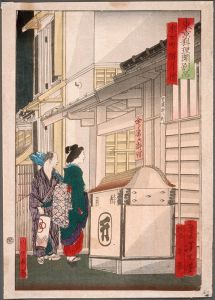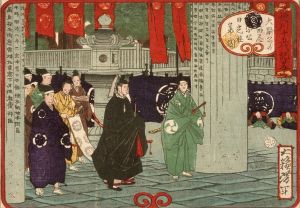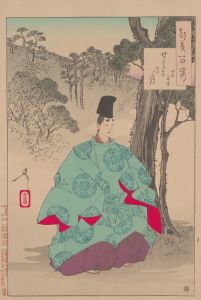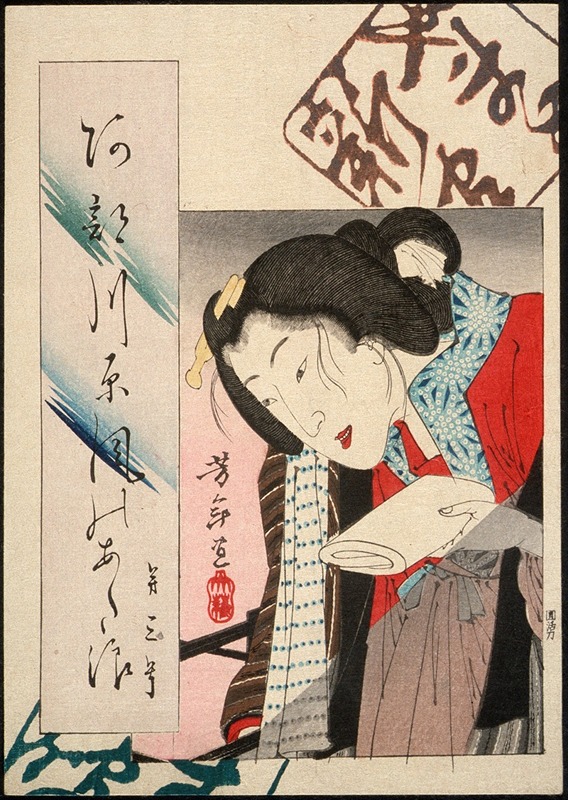
Woman Putting Out a Light
A hand-painted replica of Tsukioka Yoshitoshi’s masterpiece Woman Putting Out a Light, meticulously crafted by professional artists to capture the true essence of the original. Each piece is created with museum-quality canvas and rare mineral pigments, carefully painted by experienced artists with delicate brushstrokes and rich, layered colors to perfectly recreate the texture of the original artwork. Unlike machine-printed reproductions, this hand-painted version brings the painting to life, infused with the artist’s emotions and skill in every stroke. Whether for personal collection or home decoration, it instantly elevates the artistic atmosphere of any space.
Tsukioka Yoshitoshi (1839–1892) was a renowned Japanese ukiyo-e artist, known for his innovative and dynamic woodblock prints. His work is often characterized by its vivid imagery and emotional depth, capturing the complexities of human experience and the supernatural. One of his notable works is "Woman Putting Out a Light," which exemplifies his unique style and thematic interests.
"Woman Putting Out a Light" is part of Yoshitoshi's series "Thirty-two Aspects of Customs and Manners" (Fūzoku Sanjūnisō), created in 1888. This series is celebrated for its exploration of various facets of women's lives during the Meiji era, a period of significant social and cultural transformation in Japan. Each print in the series portrays a different aspect of femininity, capturing the diversity and complexity of women's roles and experiences.
The print "Woman Putting Out a Light" depicts a woman in the act of extinguishing a lantern. The scene is intimate and serene, showcasing Yoshitoshi's ability to convey mood and atmosphere through his use of color and composition. The woman is dressed in a traditional kimono, and her posture and expression suggest a moment of quiet reflection or transition. The act of putting out a light can be interpreted in various ways, possibly symbolizing the end of a day, a moment of introspection, or a transition from one state of being to another.
Yoshitoshi's work is notable for its attention to detail and the skillful use of color and shading, which bring a sense of depth and realism to his prints. In "Woman Putting Out a Light," the soft, muted colors and the play of light and shadow create a sense of intimacy and immediacy, drawing the viewer into the scene. The composition is carefully balanced, with the figure of the woman positioned in a way that guides the viewer's eye through the image, emphasizing the central action of extinguishing the light.
The Meiji era was a time of great change in Japan, as the country opened up to Western influences and underwent rapid modernization. Yoshitoshi's work reflects these changes, often blending traditional Japanese themes with new artistic techniques and perspectives. His portrayal of women in the "Thirty-two Aspects of Customs and Manners" series offers a nuanced view of the shifting roles and identities of women during this period, capturing both the continuity of traditional customs and the emergence of new social dynamics.
Yoshitoshi's legacy as an artist is significant, as he is often credited with revitalizing the ukiyo-e tradition at a time when it was in decline. His innovative approach and willingness to explore complex themes have earned him a lasting place in the history of Japanese art. "Woman Putting Out a Light" is a testament to his artistic vision and his ability to capture the subtleties of human emotion and experience.
Overall, "Woman Putting Out a Light" by Tsukioka Yoshitoshi is a compelling example of the artist's skill and creativity, offering insight into the lives of women during a pivotal moment in Japanese history. Through his masterful use of color, composition, and thematic depth, Yoshitoshi creates a work that resonates with viewers, inviting them to reflect on the interplay of light and shadow, tradition and change.







